On January 1, 1892, Annie Moore—a teenage émigré from Ireland—stood upon the deck of the steamship Nevada. The salty sea air that had been quite unsettling throughout the twelve-day, Trans-Atlantic voyage now evoked feelings of excitement as her vessel docked at a tiny island in New York Harbor. A sizeable crowd had gathered along the pier, singing symphonious cheers to the passengers eagerly waiting to come ashore. Annie was the first to disembark, and in doing so, she became the first immigrant processed at the new Ellis Island Immigration Station—a historic distinction that introduced a celebrated legacy of hope and new beginnings to over twelve million immigrants who followed her.
Ellis Island originally constituted three acres of marshland in the Upper New York Bay and was long the fishing grounds for the indigenous Lenni Lenape tribes. When Dutch settlers established New Netherland in the early 17th Century, they adopted the native people’s fishing practices in the surrounding Hudson River estuaries. In 1630, Michiel Pauw, an investor with the Dutch West India Company, acquired the small isle and named it ‘Little Oyster Island’ due to the abundance of mollusks surrounding its shores.
In 1664, English forces took possession of New Netherland and renamed it New York. Ownership of the island was then transferred to William Dyre, Collector of Customs for New York. Over the next century, the island changed hands several more times and served a variety of purposes—it was even an execution site for pirates in the 1760s—before current namesake Samuel Ellis purchased the property in 1774. Upon Ellis’s death in 1794, the island was entrusted to his unborn grandson, who unfortunately died in infancy later that year. Catherine Ellis Westervelt, Samuel Ellis’s daughter and the child’s birthmother, then became the beneficiary of the island.
Although Ellis Island was a private landholding, the City of New York deeded the property to the state government for fortification purposes. This was done in response to the escalating military tensions between Great Britain, France, and the United States. In anticipation of conflict, Ellis Island, along with several other properties surrounding New York Harbor, were incorporated into a nationwide series of seacoast fortifications known as the “First System.” Earthworks were first constructed on Ellis Island in 1794, but they soon fell into disrepair as hostilities temporarily deescalated.
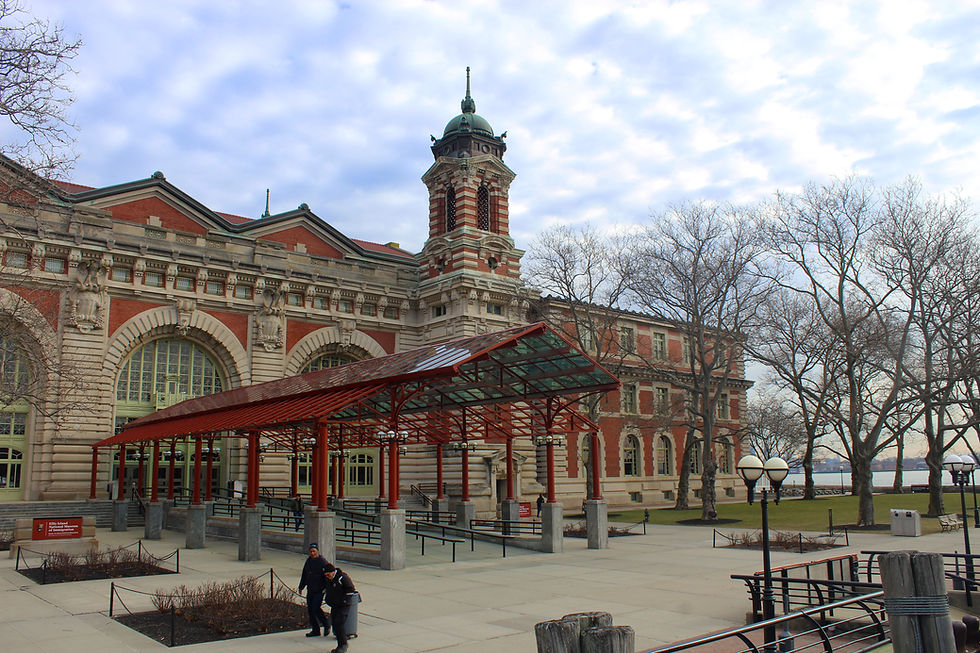
In 1811, Ellis Island’s defenses were revamped as aggressions between the United States and Britain approached the inevitability of war. Colonel Jonathan Williams, Chief Engineer of the Corps of Engineers, constructed a circular stone fort on the island, outfitted with a 14-gun battery and enough barracks to house an entire battalion of troops. During the War of 1812, Ellis Island garrisoned 182 men of the 11th U.S. Regiment and several dozen British prisoners of war, but saw no combat. In 1814, Ellis Island’s fortifications were renamed “Fort Gibson” after Colonel James Gibson, an officer killed at the Battle of Fort Erie earlier that summer.
Fort Gibson was demoted to a battery in the 1820s and utilized as a munitions dump through the Civil War. U.S. armed forces had reportedly stashed over ten thousand pounds of black powder and munitions in Gibson’s magazines, which was quite unsettling for the surrounding population. During the 1870s and 1880s, New York City residents organized several demonstrations protesting this accumulation of explosives and the dangers it presented to the public. This “Munitions Peril” was quelled in 1890 when Congress passed a resolution that ordered the arsenal be removed from Ellis Island.
This resolution also granted $75,000 towards immigration processing improvements. For nearly 35 years, Castle Clinton—the former Southwest Battery of Manhattan—served as an immigrant landing depot and received nearly eight million immigrants during its tenure. However, with increasing arrival volumes and limited resources, Castle Clinton could not effectively manage its immigration responsibilities. This dilemma prompted federal intervention. Up until the 1880s, immigration was largely a state-level concern. Each state passed its own laws and requirements that governed immigration proceedings. With the passage of the Immigration Act of 1891, the federal government “assumed direct control of inspecting, admitting, rejecting, and processing all immigrants seeking admission to the United States.”
The federal government utilized its monetary allocation to replace Battery Gibson with a new immigration facility. The first Ellis Island immigration station (which cost more than double the initial investment) opened on January 1, 1892, with Colonel John B. Weber as its first Commissioner of Immigration. Four hundred thousand immigrants were processed during its inaugural year, and the facility averaged nearly 200,000 immigrants per year during its first five years of operation. Unfortunately, the original wooden immigration complex completely burned down on June 15, 1897—the cause of the fire unknown. While there were no fatalities, all immigrant records dating back to 1855 were destroyed.
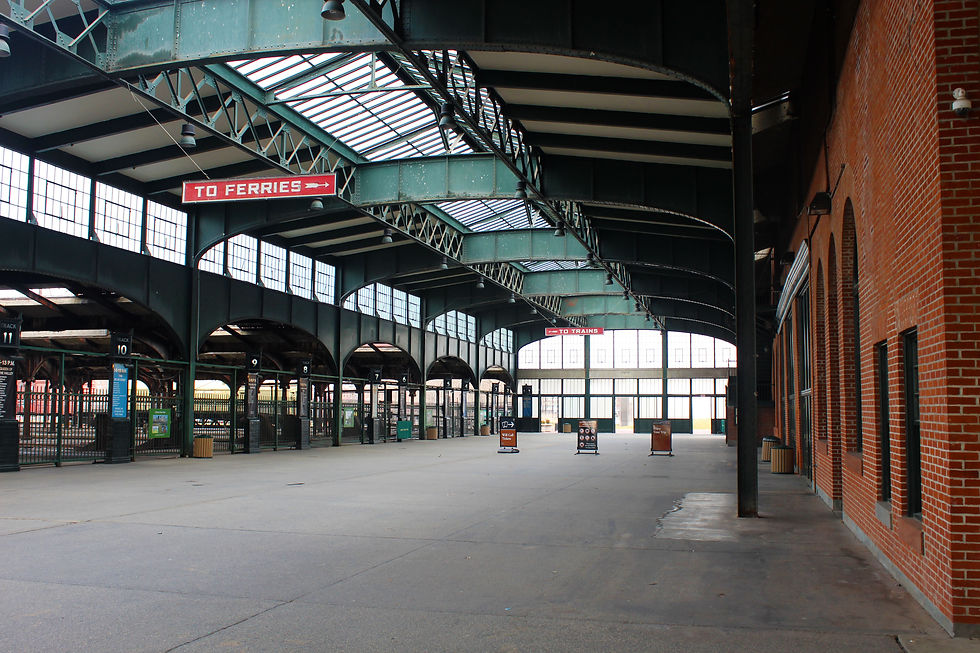
Two weeks after the disastrous fire, Congress approved plans to build a new fireproof station on Ellis Island. Treasury Supervising Architect James Knox Taylor organized a competition between architectural companies to rebuild the complex. The firm of Boring & Tilton was given the government contract with its highly acclaimed, French Renaissance designs that won awards at three World’s Fairs and the Paris Exhibition of 1900.
Construction for the second immigration complex began in September 1898. Early estimates suggested a one-year time frame for completion, but underfunding, logistical delays, and legal battles over zoning rights between New York and New Jersey hampered the project’s progress. After several months of setbacks and a $1.5 million price tag, the Ellis Island immigration station reopened for business on December 17, 1900.
While cosmetic appearances were a relatively quick fix, more pressing internal issues took longer to resolve. Since its inception, the Ellis Island immigration office had a disparaging reputation of corruption and scandal. Government entities and private companies threatened and embezzled new arrivals of their possessions and money. Immigration inspectors targeted affluent-looking folk, detained them for unjust causes, threatened deportation, and demanded bribes for their release. Other individuals were more predatory and harassed young women. Banking agents lied about monetary exchange rates while the railroad ticket office sold boarding passes at exorbitantly high prices.
In 1902, William Williams replaced Thomas Fitchie as the new Commissioner of Immigration for Ellis Island. Williams was appointed directly by President Theodore Roosevelt with instructions to rid the immigration office of Fitchie’s corrupt administrators. The new Commissioner cleaned house and replaced dishonest businesses with trustworthy service providers. While Williams enhanced the integrity of the immigration office, he simultaneously heightened the standards of entry for immigrants. Those in dire financial straits or poor physical condition suddenly found themselves subject to deportation.
In March 1902, under Williams’s supervision, the Ellis Island Hospital opened its doors. The 125-bed facility was one of the largest public health hospitals in the country, yet constantly overcrowded due to record rates of arrivals needing medical care. The gross overflow of infirmed patients required expansion of the hospital complex. In 1904, the U.S. government purchased an underwater plot of land from New Jersey to construct an artificial island and contagious disease ward for the Ellis Island Hospital. The island was assembled via landfill in 1906; however, the contagious disease ward would not be completed until 1910.
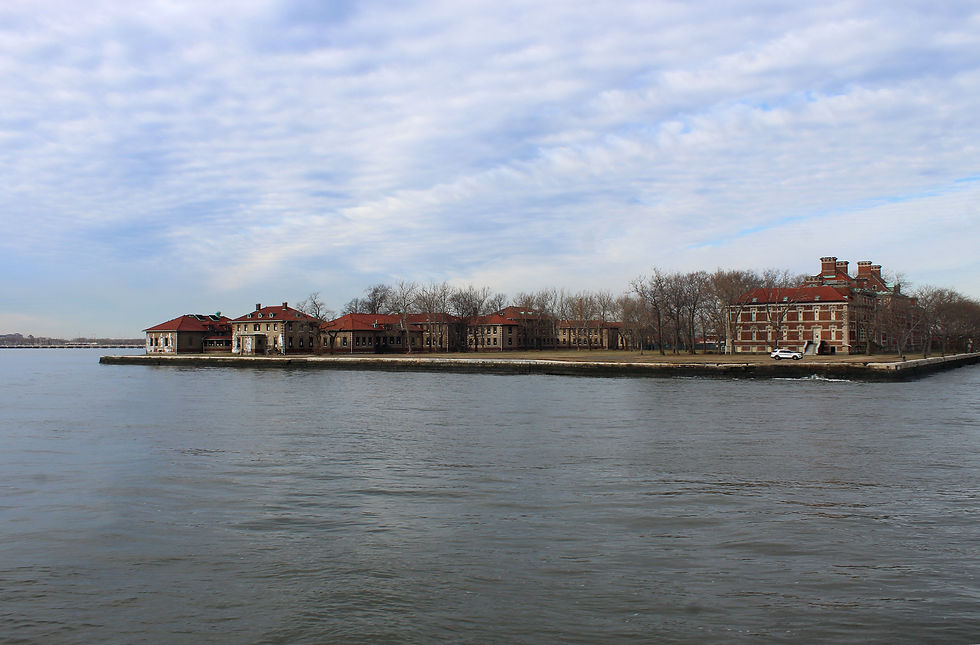
Williams resigned as Commissioner in 1905 and was succeeded by Robert Watchorn. Having immigrated to America himself in 1881, Watchorn displayed more empathy and kindness towards new arrivals than previous administrators. Perhaps this compassion contributed to Ellis Island’s record year of immigration in 1907, with over one million arrivals processed. However, nativists and xenophobes were uncomfortable with Watchorn’s lax policies. After a wave of violent crime struck New York City in 1908, the Ellis Island immigration office received considerable blame for the lawlessness. Watchorn was forced out of office the following year.
In 1909, William Williams returned as Commissioner of Immigration at the behest of President William Howard Taft. He reestablished his strict regime and implemented even higher immigration standards—the most stringent policy being that each immigrant was required to have at least $25 on their person (about $700 today) plus a train ticket to their final destination. In the first eleven days of this policy, over six hundred people were excluded from entry. Public disdain for these unreasonable requirements forced Williams to rescind his order.
Arrival and Inspection
When passenger ships arrived in New York Harbor, they were directed to the Lower Bay for quarantine. There, doctors boarded vessels and screened individuals for contagious diseases such as typhus or influenza. This was a long and tedious process, and it was not uncommon for new arrivals to wait aboard their ships for several days. If public health officials detected any potential infections, all exposed individuals were sent to Hoffman and Swinburne Islands for observation and treatment. If the ships were free of disease, they continued on to Manhattan.
While docked in Manhattan, first and second-class passengers underwent more thorough medical and legal inspections by immigration officials. These precursory proceedings were privileged only to the upper classes since they were deemed less likely to become "public charges”—those unable to support themselves and become social burdens. Satisfactory reports would typically allow these individuals to disembark in Manhattan and bypass Ellis Island altogether; however, any sickness, disability, or legal trouble required further scrutiny.
The vast majority of passengers traveled in steerage—the lower compartments of the ship that were often overcrowded and unsanitary. Shipping companies crammed as many as two thousand individuals below deck to maximize profits. These immigrants were omitted from onboard inspections and instead ferried over to Ellis Island for processing.
When passengers arrived at Ellis Island, they were directed into the Main Building of the immigration complex for a comprehensive legal review and medical examination. As expected, the lines were painstakingly long. Many immigrants had to wait 3 – 5 hours for admission. During this downtime, doctors performed “line inspections.” Immigrants were split into several single-file lines and observed by two physicians for any obvious physical disabilities. The doctors who performed these assessments were nicknamed “Six Second Specialists” as many of the examinations took six seconds or less to complete. If an inspector noticed any indication of disease or disability, the immigrant’s clothing was marked with chalk to denote the potential problem. Marked individuals were taken to separate offices for further examination. If medical intervention was necessary, immigrants were admitted to the Ellis Island Hospital.
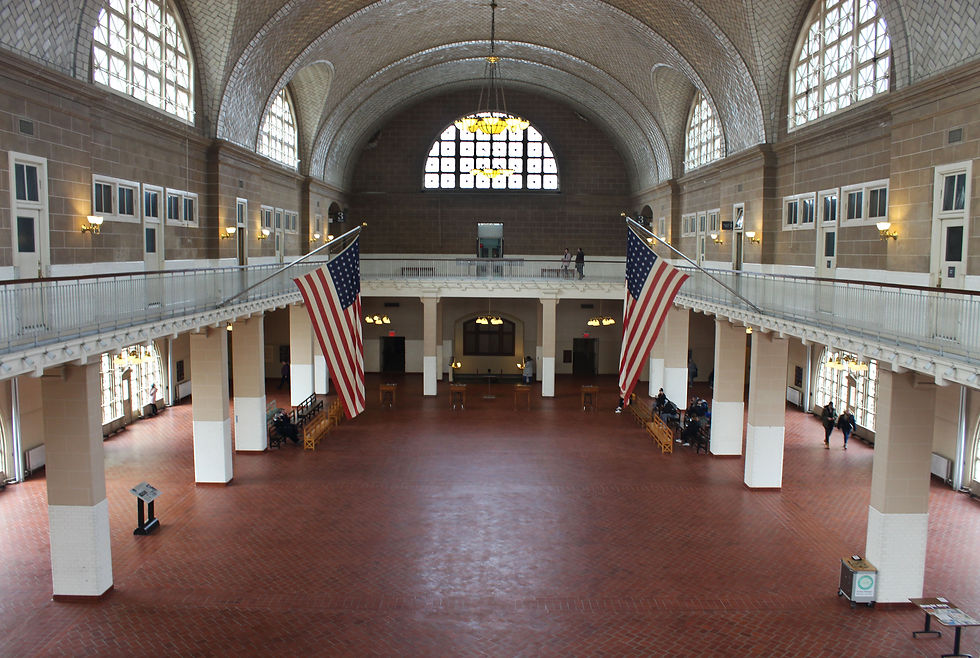
By 1911, the Ellis Island hospital had grown from a 125-bed facility to a 450-bed complex of over one dozen building—including a 125-bed contagious disease wing, maternity ward, and operating room. The contagious disease hospital primarily served minors who had contracted common childhood diseases such as measles, diphtheria, and scarlet fever. Many of these individuals required 1 – 2 weeks of care to fully recover; however, some were not so fortunate. According to the hospital’s medical records, over 3500 people (1400 of whom children) died while on Ellis Island. Contrarily, over 350 live births occurred on the island.
Following an acceptable medical exam, legal reviews were conducted to determine an immigrant’s “social, economic, and moral fitness.” Immigration officials interrogated individuals using a 29-item questionnaire that had been completed by the respective party prior to their trans-Atlantic journey. These interviews lasted no more than a few minutes and any answers given were cross-referenced with the survey to determine the immigrant’s legitimacy and verify their identity. Those who aroused suspicions (about 10% of all immigrants) were sent to a Board of Special Inquiry for a legal hearing,
These Special Inquiry hearings were conducted to determine an individual’s potential to be a productive member of American society. Immigrants had to dictate they were willing and able to work, but they could not admit to any pending jobs due to the Alien Contract Labor Law of 1885, which prohibited the importation a cheap labor. Character witnesses were also called on behalf of the immigrant to validate their good intentions. The courts heard 50 – 100 cases daily and most individuals were absolved of any transgression. However, about 2% of immigrants who failed the medical and/or legal screens were deemed a “public charge.” These individuals—which included the physically-disabled, impoverished, epileptics, criminals, anarchists, political radicals, and other “malcontents”—were denied entry to the United States and deported immediately.
Before departing from Ellis Island, accepted immigrants had the opportunity to seek services offered by various Immigration Aid Societies, such as the Red Cross, YMCA, and Salvation Army. These organizations provided valuable resources like food, clothing, travel information, religious ceremonies, and interpretation services. Language barriers were prevalent on Ellis Island and required the skills of interpreters to overcome. Every immigration inspector was assigned a translator well-versed in several major languages and dialects. Perhaps the most famous of Ellis Island’s interpreters was Fiorello H. LaGuardia—New York City’s celebrated mayor from 1934 – 1946—who was fluent in Italian, Yiddish, German, and Croatian.
In addition to providing necessary resources, welfare agencies protected immigrants from predatory labor brokers, who offered susceptible individuals promising jobs only to exploit them for cheap labor and dangerous working conditions. Social workers escorted job-seeking immigrants to employment offices where they could apply for fair and decent jobs. Aid societies also housed unaccompanied women and children until they could support themselves or were reunited with family. Once the necessary arrangements were made, weary travelers boarded ferries to New York and New Jersey where they would land as America’s newest citizens.
The Black Tom Explosion – July 30, 1916
The global turmoil of World War I reinforced growing desires of American isolationism and nativistic policies. Traffic through Ellis Island virtually evaporated as the United States declared neutrality in the early years of the conflict. In the preservation of economic interests, the U.S. sold munitions to belligerents on all sides; however, nearly all American armaments were sold to the Entente Powers as Central Power supply lines were blockaded.
Black Tom Wharf—a railroad yard and barge-loading area located 300 yards from Ellis Island—was one of the busiest munition shipping centers in America, housing “the most extensive arsenal anywhere outside of the warzone itself.” Yet for as abundant its volatile cargo, the wharf was practically unguarded, easily accessible from land and water.
On July 30, 1916, several dozen barges and railroad cars loaded with 2 million pounds of TNT and munitions awaited at Black Tom Wharf for transport to Russia. Just after midnight, dockworkers noticed several small fires around the pier. They immediately contacted the Jersey City Fire Department who arrived around 1:20 a.m. By that time, the flames had engulfed multiple docks and warehouses and it was only a matter of time before the inferno ignited the unprotected explosives.
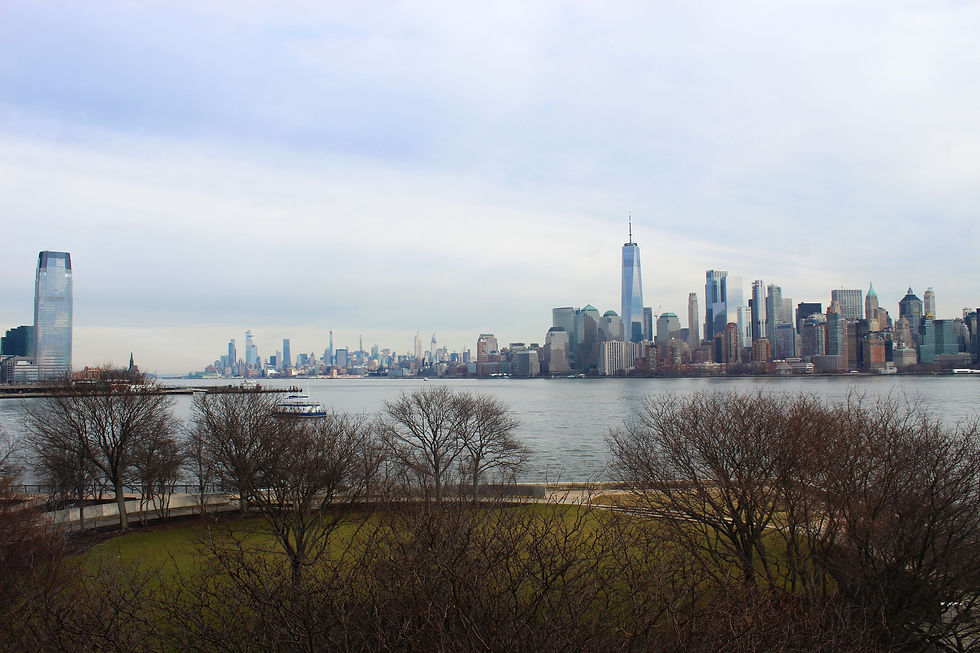
At 2:08 a.m., thousands of pounds of dynamite denotated. Shockwaves from the blast were felt from Maryland to Connecticut and registered nearly a 5.5 on the Richter Scale. Windows within 25 miles of Black Tom were shattered. Shrapnel lodged itself in the Statue of Liberty and destroyed the roofs of Ellis Island’s main processing building and hospital. Fortunately, no one on Ellis Island was harmed as all 500 immigrants and 125 employees were safely evacuated to the mainland. A second detonation occurred around 2:45 a.m. adding to the cataclysmic destruction. The explosions left a 375 x 175-foot crater where the Black Tom Wharf used to be and caused an estimated $20 million in property damages (roughly half a billion dollars today). According to official reports, five people died in the blasts, which is astonishing considering their destructive force, but other estimates place the death toll much higher.
Initial blame for the explosions fell upon the Lehigh Valley Railroad Company—the proprietor of the munitions depot—and the Johnson Lighterage and Storage Company, which owned several barges loaded with explosives. An investigation revealed that both companies had violated safety regulations regarding storage and security, especially the Johnson Lighterage and Storage Company who, according to Jersey City Public Safety Commissioner Frank Hague, “tied up [their barges] at Black Tom to avoid a twenty-five dollar [towing] charge.”
While negligence was evident, the cause of the fires remained obscure. Federal agents interviewed the dockworkers who were present the night of the explosions. The workers admitted to lighting smudge pots—oil fires contained in barrels to keep bugs away—but authorities could not trace the fires’ origins to the pots. Investigative reports concluded that the blasts were accidental, although some individuals believed German spies were at fault. In the months prior to the Black Tom Explosion, the New York bomb squad arrested nine Germans for “conspiring to set on fire by means of incendiary bombs munitions ships playing between this port and Europe.” However, investigators were hesitant to insinuate German involvement since central European immigrants typically assimilated well into American society.
Officials investigated the German sabotage theory further and identified a viable suspect, Michael Kristoff—a Slovakian immigrant who spent considerable time around the Black Tom docks. While in police custody, Kristoff admitted that German agents had paid him to place cigar bombs around the pier and identified Kurt Jahnke and Lothar Witzke, two seasoned German saboteurs, as his accomplices. Despite the confession and suspicious circumstances, there was little physical evidence tying Kristoff to the explosion and he was subsequently released. It took nearly seven years before investigators uncovered sufficient evidence linking the Black Tom Explosion to German espionage; however, in the weeks following the attack, anti-German sentiments became more prevalent in the court of public opinion, thereby increasing support for American military intervention in World War I.
Closing America’s Gateway
U.S. immigration policies grew increasingly chauvinistic and xenophobic following the blatant foreign insurgencies on American soil. In 1917, the same year the United States entered World War I, Congress passed the Asiatic Barred Zone Act, which prohibited nearly all immigration from the Asia-Pacific Zone and instituted a native language literacy test for individuals aged sixteen years or older to determine their “mental aptitude.” Many impoverished and lower-class immigrants—who were not privileged with a formal education—were turned away because of this law.
During the final two years of World War I, Ellis Island’s immigrant activity dropped by 79% compared to its pre-war levels. Much of the island was converted into a detention camp for German sailors, alleged spies, anarchists, and political radicals. However, by 1918, most enemy aliens had been transported to prisoner-of-war camps further inland and the War Department commandeered Ellis Island as a medical treatment facility for U.S. soldiers.
In 1921, the Emergency Quota Act was passed. This law capped U.S. immigration to 350,000 people per year and instituted the National Origins Formula, which restricted annual immigration from any country to no more than three percent of that nationality’s population living in the United States as of 1910. These restrictions were designed to curtail immigration from southeast Europe and non-European countries. The Immigration Act of 1924 took these limitations even further, capping total immigration to 150,000 people per year and reducing quotas to two percent.
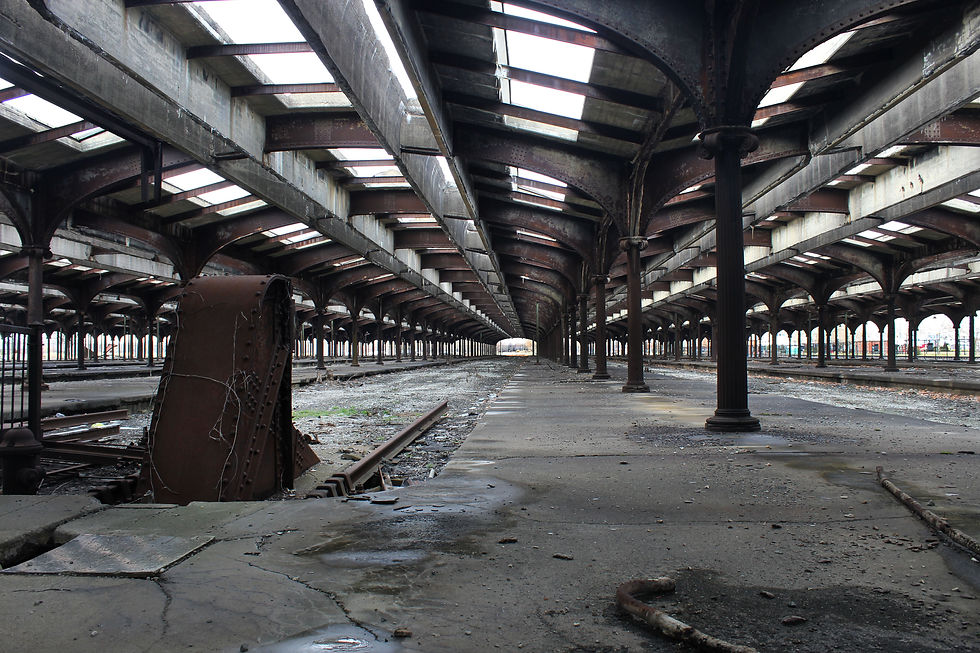
Decreased processing volumes allowed eligible immigrants to undergo inspection at American consulates in their home countries, making the trip to Ellis Island obsolete. As a result, Ellis Island was downgraded to an immigrant detention center in the mid-1920s. The Stock Market Crash of 1929 further dissuaded immigration to the United States. By the 1930s, only deportees and merchant mariners populated the island.
During World War II, Ellis Island functioned as an internment camp for over 7,000 enemy aliens and their families. At the same time, the United States Coast Guard operated a training station on the island that served 60,000 enlisted men and 3,000 officers over the course of the war. Following World War II, Ellis Island returned to its normal function as an immigrant detention and deportation facility. The island saw reduced foot traffic during the late 1940s with an average daily immigrant population of 250 people. With such little activity, the U.S. Public Health Service was forced to close the Ellis Island Hospital in the early 1950s.
In 1951, Ellis Island’s detainee population increased to five times its previous size following the passage of the Internal Security Act. Fueled by fears of the Cold War, this law prohibited any person associated with communism or authoritarian regimes from entering the United States. Immigrants of suspicious backgrounds and affiliations were apprehended around New York City and incarcerated on Ellis Island without bail. However, by 1953, many of Ellis Island’s detainees were released due to public backlash against the unconstitutional arrests.
On November 12, 1954, Ellis Island closed its doors for good. After 62 years, the magnificent facility that once processed over twelve million immigrants had been reduced to a “ghostly complex of dilapidated buildings.” Almost immediately after its closing, Ellis Island was the subject of numerous redevelopment proposals. Potential plans included a luxury resort, retirement community, world trade center, college campus, and Frank Lloyd Wright’s ‘Key Project’—a $100 million prototypical “city of the future” designed by the architect in 1959. Ultimately, President Lyndon B. Johnson added Ellis Island to the Statue of Liberty National Monument on May 11, 1965.
In the summer of 1965, architect Philip Johnson was appointed by Secretary of the Interior Stewart Udall to design Ellis Island’s restoration plans. Johnson presented his two-fold project the following February. First, the island’s most important features—the main intake building, hospital, and ferry docks—would not be restored, but stabilized in their current condition as historic ruin. Second, all the other buildings would be demolished to make way for the proposed “Wall of Sixteen Million”—a 130-foot high, cone-shaped monument that contained the names of all the immigrants processed at Ellis Island. While exceedingly ambitious, Johnson’s plan was rejected by the National Parks Service (NPS) since it surpassed the allocated budget of $6 million. Instead, $250,000 was appropriated for emergency repairs; however, this would not be enough to prevent Ellis Island from slipping into further decay.
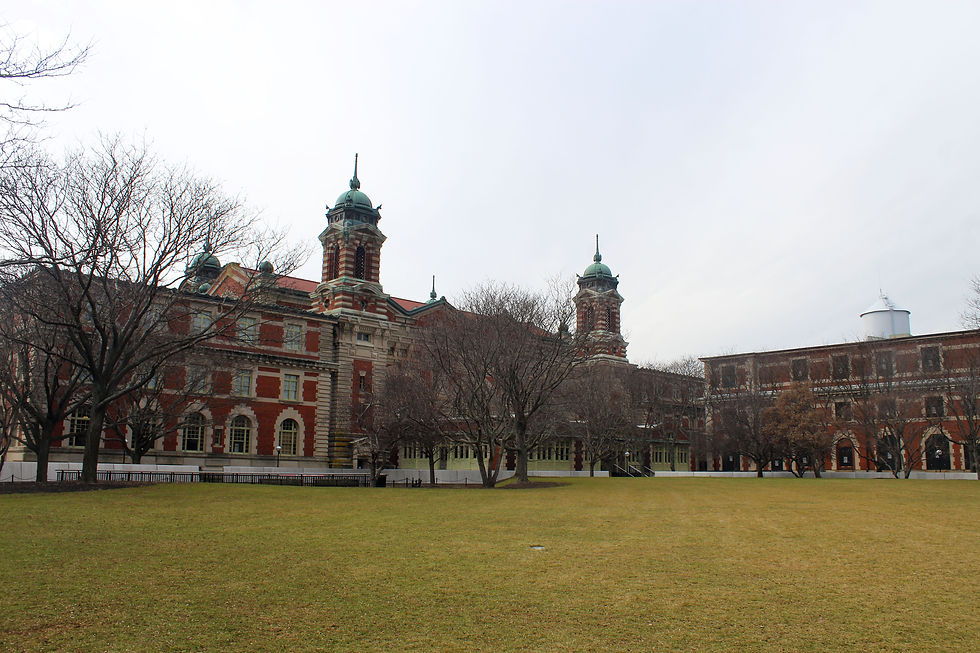
In July 1970, several dozen members of the National Economic Growth and Rehabilitation Organization (NEGRO) established a squatting community on Ellis Island. During this illegal occupation, the organization’s founder, Dr. Thomas W. Matthew—an African American neurosurgeon—negotiated with the NPS to purchase the island and construct a large-scale rehabilitation facility for addicts and ex-convicts. After two weeks of occupation, Matthew and the NPS reached an agreement. Matthew pledged to raise $6 million for his project, and in exchange, the NPS issued a special use order to NEGRO which allowed them to occupy the island’s southern buildings. However, the NPS prohibited the organization from occupying structures on the northern end of the island and reserved the right to regularly investigate the occupants’ compliance. In September 1970, sanitary engineers found numerous health code violations and recommended that Ellis Island be returned to the NPS for historic restoration. NEGRO’s permit was eventually revoked in April 1973 following repeated contract breaches, negligence, and Matthew’s inability to generate sufficient funds.
In April 1975, Dr. Peter Sammartino launched the Restore Ellis Island Committee and pledged $1.5 million to restoration costs. This generous donation allowed the NPS to completely restore the seawalls and ferry docks and partially refurbish the north side of the island. In May 1976, Ellis Island was reopened to visitors for the first time in over twenty years. In 1982, the Statue of Liberty-Ellis Island Centennial Commission was organized to help raise $128 million for the latest proposed Ellis Island Restoration Plan. The commission was able to raise $350 million and restore the main building to its 1918 appearance. The main building reopened on September 10, 1990, as the Ellis Island National Museum of Immigration, dedicated to America’s extensive immigrant heritage.
Visiting Ellis Island
Ellis Island can only be accessed by ferry with two different boarding locations available to tourists. For those visiting New York City, ferry access is located at Castle Clinton in Battery Park, Manhattan. For all others on the New Jersey side of the Hudson River, ferries can be boarded at Liberty State Park in Jersey City.
Liberty State Park was originally called Communipaw Cove. However, between 1867 and 1928, the inlet was covered with landfill to accommodate the Central Railroad of New Jersey (CNJ). The railroad laid over one hundred miles of track at its waterfront station—the largest such complex in New York Harbor at the turn of the 20th Century—and transported an estimated 10.5 million immigrants to various destinations across the United States. The CNJ’s imposing, three-story railroad terminal (which still stands today) once accommodated between 30,000 and 50,000 people per day and serviced over 100 ferries and 300 trains. While passenger operations ceased in 1967, the station now serves as the ticket office for the Ellis Island ferries.
The ferries operate on a strict departure schedule, so make sure you are in line ahead of time! Once boarded, the ferries take 10 – 15 minutes to reach Ellis Island. Along the way, visitors have an incredible opportunity to observe the New York skyline from the water. Passengers disembark on the ferry docks in front of the iconic main processing building, now the Ellis Island Immigration Museum, which contains several exhibits across three floors.

The main entrance of the facility leads visitors to the Baggage Room. Here, immigrants checked in their luggage before proceeding up the stairwells to the Registry Room. However, lost or stolen property was a common fear and many individuals opted to carry their belongings with them throughout the entire inspection route. Today, the Baggage Room has been converted into the national park’s information center. The former railroad ticket office—located directly behind the lobby—features an intriguing exhibit called Journeys: The Peopling of America 1550 – 1890, which describes the phenomena of American immigration prior to federal oversight.
The Journeys exhibit continues with New Eras of Immigration, 1945 – Present in the adjoining kitchen and laundry buildings located on the first floor’s west wing. Similarly to The Peopling of America, New Eras describe American immigration in years following Ellis Island’s closure and the current challenges potential immigrants face today. Between the two Journeys galleries is the American Family Immigration History Center—a database of immigrant ship manifests from 1892 to 1924. About 40% of Americans can trace their ancestry back to Ellis Island, so this a wonderful opportunity to discover some potentially fascinating genealogy.
After ascending to the second floor, tourists enter the Registry Room where millions of immigrants underwent physical and legal examinations. This once-busting corridor now stands an echoing chamber, absent of the multitudinous voices that permeated its walls. It’s hard to imagine nowadays what the immigrant experience at Ellis Island was like; however, visitors can garner an excellent representation of these processes in the Through America’s Gate exhibit. On the opposite end of the Registry Room is the Peak Immigration Years gallery, which chronicles the massive immigrant influxes from the 1880s to 1920s and portrays how domestic attitudes towards immigration changed over time.
Visitors can appreciate a splendid view of the Registry Room from the third-floor balcony. Also on the third floor are several refurbished dormitories that depict how some overnight immigrants were accommodated. As many as six hundred immigrants were housed on the third floor at a single time. Around the corner from the dormitories are four additional exhibits that describe Ellis Island’s early history, portray its abandonment and restoration, and catalog over two thousand items donated by immigrant families who passed through the facility’s doors.
After touring the Main Building, visitors can exit to the back patio on the first floor, view the ruins of Fort Gibson, and admire the Wall of Honor—a continually-developing monument inscribed with the manes of over 775,000 individuals processed at Ellis Island. Back at the museum's front entrance, tourists can observe the Ellis Island Hospital buildings across the ferry inlet. These abandoned structures remain unrenovated and are off-limits to general admission ticketholders. However, for an extra $45, visitors can purchase Hard Hat Tours that include a 90-minute, ranger-guided excursion through complex. While this venture was not available at the time of my visit, it’s something I would definitely like to experience in the future.
Ellis Island is an awesome and humbling experience befitting for all Americans. It is a manifestation of the American Dream and a solemn reminder of the many hardships immigrants endured (and continue to bear) while trying to achieve it. But Ellis Island’s history goes beyond its 62-year tenure as the nation’s largest federal immigration station—it describes the interactions between indigenous people and the first European colonists, chronicles America’s convoluted immigration policies, and perpetuates a diverse national heritage that serves as a beacon for future immigrants to follow.
On a personal note, several of my Italian relatives immigrated to the U.S. through Ellis Island. Needless to say, this trip was particularly emotional and introspective as I walked through the same corridors my ancestors did. It brought to mind that they left their friends, homes, and livelihoods behind in order to receive an opportunity for a better life; not only for themselves, but their families as well. I would not be where I am today if it wasn’t for their perseverance and sacrifice. For that, I am forever grateful.
Visit the following resources for more information on Ellis Island's History:
Check out these resources about the Black Tom Explosion
Below are transcripts of the aforementioned restrictive immigration laws
Visit VisitNJ.org and Untapped Cities for more information on Liberty State Park

















